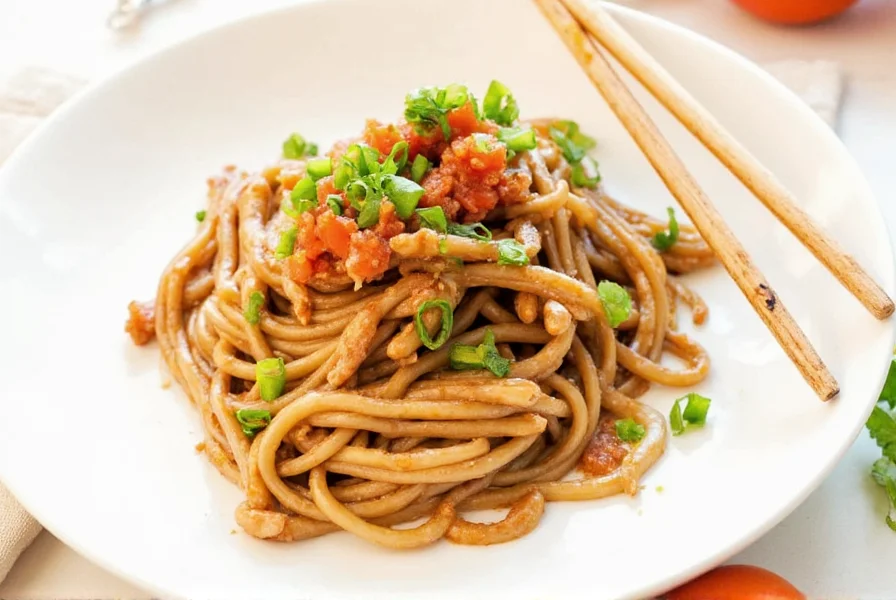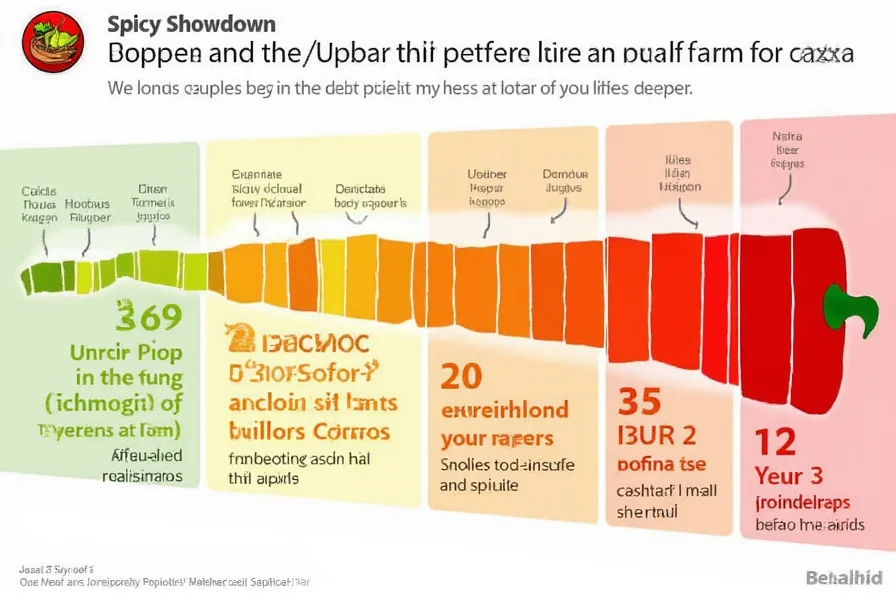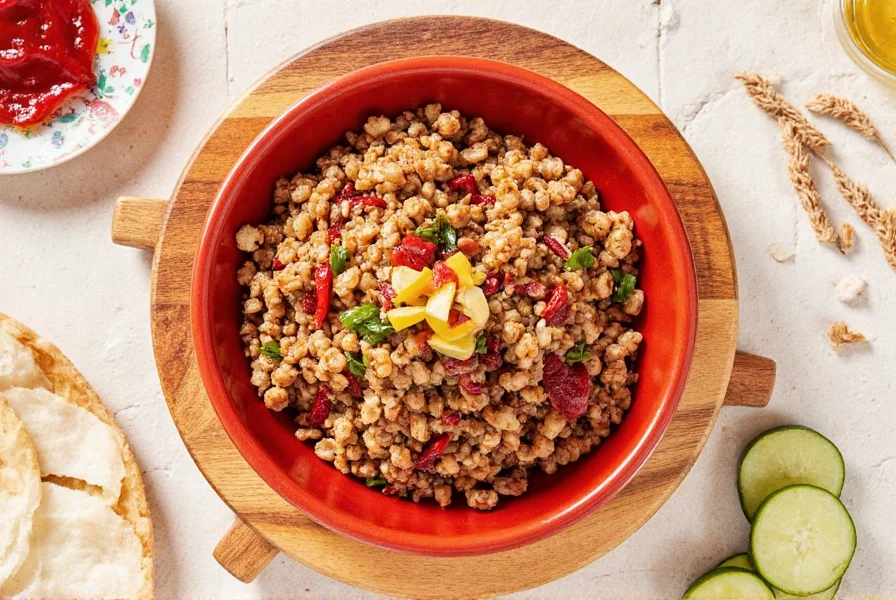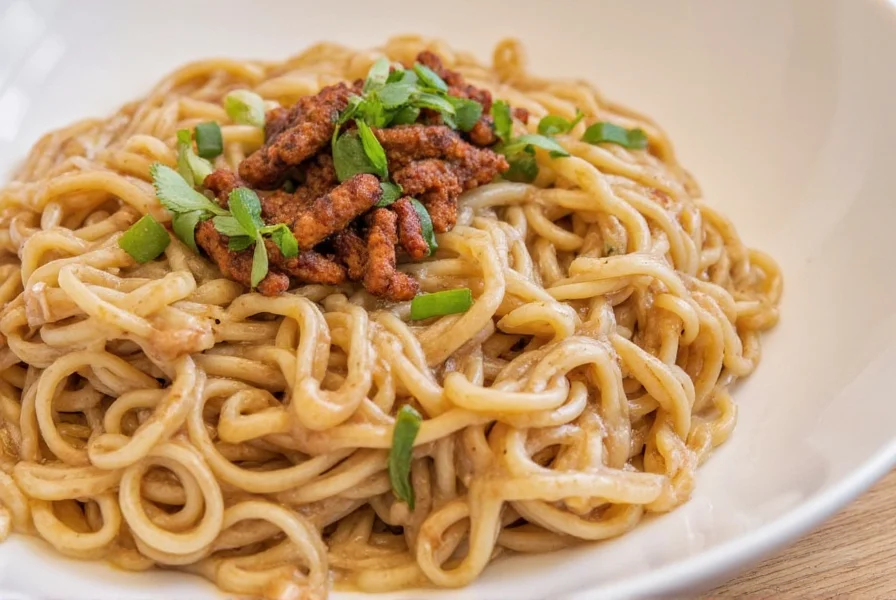Table of Contents
What is Umami?
Umami is the fifth basic taste, alongside sweet, sour, salty, and bitter. It's a savory, deeply satisfying flavor that creates a mouthwatering sensation in the mouth. The term comes from Japanese, meaning "deliciousness" or "pleasant savory taste." Unlike other tastes, umami provides a rich, full-bodied quality that enhances food without being overpowering.

The Science Behind Umami
Umami was first identified in 1908 by Japanese chemist Kikunae Ikeda, who discovered glutamic acid in seaweed broth. Today, we know umami is primarily caused by two compounds:
- Glutamate – Naturally found in tomatoes, cheese, mushrooms, and soy products.
- Inosinate – Found in meat, fish, and some vegetables.
When these compounds combine, they create a synergistic umami effect. This explains why certain pairings like Parmesan cheese with tomato sauce or miso soup with seafood taste exceptionally satisfying.

Top 5 Key Umami-Rich Ingredients
| Ingredient | Source of Umami | Best Used In |
|---|---|---|
| Mushrooms (especially Shiitake) | Naturally high in glutamate, with dried shiitake having concentrated levels | Stews, risottos, sauces, broths |
| Tomatoes | High in both glutamate and inosinate, especially when ripe or sun-dried | Sauces, soups, salads |
| Aged Cheese (Parmesan, Gouda) | Glutamates develop and intensify during aging process | Pasta, gratins, finishing dishes |
| Miso Paste | Fermented soybean paste rich in glutamates | Miso soup, marinades, glazes |
| Worcestershire Sauce/Fish Sauce | Contains fermented ingredients with umami-rich compounds | Marinades, dressings, stews, as umami booster |

How to Enhance Umami in Your Cooking
Here are practical techniques to maximize umami in your dishes:
1. Use Natural Sources
Replace artificial flavor enhancers with natural umami ingredients like mushrooms, tomatoes, or aged cheese. These add depth without extra salt or chemicals.
2. Combine Ingredients
Pair glutamate-rich foods (tomatoes) with inosinate-rich foods (meat or mushrooms) to create synergistic umami. Example: roasted tomatoes with grilled steak or shiitake mushrooms in beef stew.
3. Cook Slowly
Slow-cooking methods like simmering, braising, or roasting release more umami compounds. A slow-simmered tomato sauce will be significantly richer than a quick-cooked version.
4. Add Fermented Ingredients
Fermentation increases umami. Use miso, soy sauce, or kimchi to add complexity to soups, marinades, and dressings.

A Practical Guide to Buying Umami-Boosting Ingredients
Choose high-quality ingredients for maximum umami impact:
1. Miso Paste
Features: Fermented soybeans, rice, and salt. Available in red, white, and yellow varieties.
Advantages: Adds depth to soups, dressings, and marinades.
Use Cases: Miso soup, glazes, vegetable dishes.
Target Audience: Asian cuisine lovers, health-conscious cooks.
Suitable Occasions: Casual dinners, lunch prep, holiday meals.
2. Aged Parmesan Cheese
Features: Hard, nutty cheese aged 12+ months.
Advantages: High glutamate content for sharp, savory notes.
Use Cases: Pasta, salads, sauces.
Target Audience: Italian cuisine enthusiasts, pasta lovers.
Suitable Occasions: Dinner parties, weeknight meals, gourmet cooking.
3. Shiitake Mushrooms
Features: Dried shiitake mushrooms have concentrated umami.
Advantages: Perfect for broths, stews, and vegetarian dishes.
Use Cases: Asian recipes, mushroom sauces, meat substitutes.
Target Audience: Vegetarians, plant-based eaters, adventurous cooks.
Suitable Occasions: Weekends, special occasions, meal prepping.
4. Worcestershire Sauce
Features: Fermented condiment with complex flavor profile.
Advantages: Adds savory kick to meats, sauces, and marinades.
Use Cases: Steak rubs, Caesar dressing, soup enhancer.
Target Audience: Meat lovers, BBQ enthusiasts, casual cooks.
Suitable Occasions: Grilling season, family dinners, barbecues.

Frequently Asked Questions About Umami
What exactly is umami?
Umami is the fifth basic taste, alongside sweet, sour, salty, and bitter. It's a savory, deeply satisfying flavor that creates a mouthwatering sensation. The word "umami" comes from Japanese and means "deliciousness" or "pleasant savory taste." It's experienced in foods like mushrooms, aged cheeses, and tomatoes.
What causes the umami taste?
Umami is primarily caused by glutamate (found in tomatoes, cheese, mushrooms) and inosinate (found in meat, fish). When combined, they create a synergistic effect that intensifies the savory flavor. This is why dishes like Parmesan-tomato sauce or miso-broth taste exceptionally rich.
What are the top 5 umami-rich ingredients?
The most versatile umami boosters are: aged Parmesan cheese (high glutamates), shiitake mushrooms (especially dried), tomatoes (ripe/sun-dried), miso paste (fermented soy), and Worcestershire/fish sauce (fermented condiments). These ingredients transform simple dishes into complex, satisfying meals.
Can vegetarians and vegans experience umami?
Absolutely! Plant-based umami sources include mushrooms (shiitake), tomatoes, fermented products (miso, soy sauce), sun-dried tomatoes, nutritional yeast, and vegetables like asparagus. Many traditional vegetarian dishes rely on these natural umami sources for depth of flavor.
How to add umami without MSG?
Use natural ingredients like tomatoes, mushrooms, aged cheeses, and fermented products. Combine glutamate-rich foods (tomatoes) with inosinate-rich foods (mushrooms) for synergy. Slow-cooking methods, roasting vegetables, and using dried ingredients also intensify natural umami flavors.
Is umami the same as MSG?
No. Umami is the actual taste sensation, while MSG (monosodium glutamate) is a purified form of glutamate added to foods. Many traditional cuisines have used natural umami sources for centuries through fermentation and aging long before MSG was isolated as a compound.
Conclusion
Understanding umami unlocks a new dimension in cooking. This fifth taste—scientifically proven and naturally present in many foods—adds depth and satisfaction without artificial additives. By leveraging natural umami sources and pairing techniques, any cook can elevate everyday dishes into memorable culinary experiences.















 浙公网安备
33010002000092号
浙公网安备
33010002000092号 浙B2-20120091-4
浙B2-20120091-4